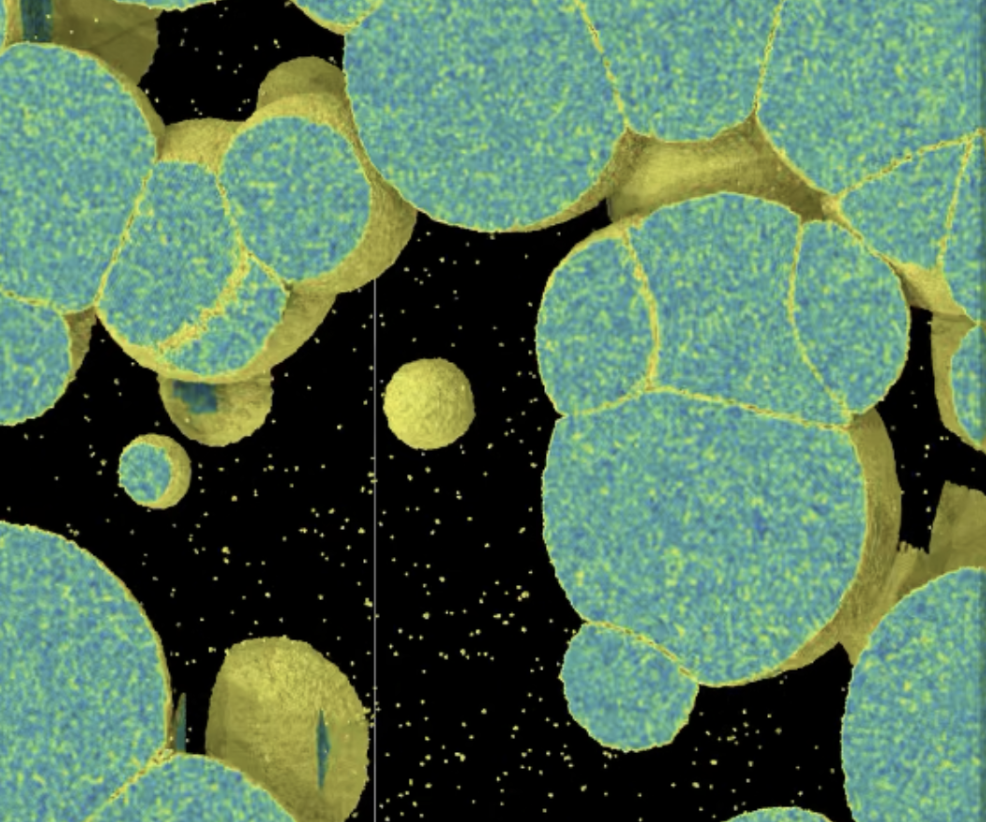Diamonds aren’t just beautiful sparkly rocks or a girl’s best friend; they’re also the hardest material on Earth. Formed when planetary interior forces exert immense pressure on carbon atoms, they compress into a crystal structure so strong that only another diamond can cut it.
But could the universe contain something even harder than a diamond — a superdiamond, perhaps? That’s what physicist Ivan Oleynik and his group at the University of South Florida are studying with the help of the world’s most powerful supercomputer and lasers. Their research could help planetary scientists understand how the universe’s carbon-rich planets might have formed.
Carbon is a versatile element. Under ambient pressure, it exists as a sooty lump of coal or the soft, flaky graphite used in pencils. The pressure required to synthesize diamond is more than 50,000 times that of Earth’s atmosphere. Therefore, diamond formation only occurs when carbon atoms are squeezed together by a planet’s mantle or under the high pressure and high temperature conditions created in a lab. The immense pressure required to form diamonds has led astrophysicists to theorize that some exoplanets in distant parts of the universe may have diamonds at their cores – or even superdiamonds. “It’s a much more diverse world outside of our solar system,” Oleynik says.
No one has ever seen a superdiamond, but scientists have spent over four decades considering its possible existence. Under the right pressure and temperature conditions, diamond’s carbon atoms might rearrange into a crystal structure called BC8, which means a body-centered, eight-atom unit cell. Silicon, which has a similar atomic structure, can form BC8 crystals, suggesting that the same might be possible for carbon.
But figuring out how carbon’s BC8 phase would form has proven extraordinarily difficult to model. Bonding in carbon is governed by quantum mechanics of electrons, and explicit quantum-mechanical simulations involving many millions of atoms are impossible even with the most powerful computers. To overcome this challenge, Oleynik’s group has recently applied machine learning to develop a classical yet quantum-accurate interatomic potential for carbon. A classical interatomic potential approach describes the dynamics of billion-atom carbon systems using only atomic coordinates, avoiding the explicit quantum-mechanical treatment of electrons.
Billion-atom molecular dynamics simulations take 24 hours to run on all Frontier nodes.
Although highly accurate, this machine learning potential for carbon is very computationally expensive. This is why billion-atom molecular dynamics simulations are only possible on the Department of Energy’s exascale computing system, Frontier, at Oak Ridge National Laboratory. Using this advanced computational technology, Joseph Gonzalez, a postdoctoral scholar in Oleynik’s lab, has simulated BC8 formation by explicitly tracking the dynamics of a billion atoms under various pressures and temperatures to determine the conditions for BC8 synthesis. According to Gonzalez, these billion-atom molecular dynamics simulations, which describe atomic behavior with over 97% accuracy, take 24 hours to run on all Frontier nodes.
These simulations have provided the researchers with a step-by-step view of BC8 formation. When pressure turns graphite into a diamond, for instance, the carbon atoms in graphite simply shift their positions into a new crystal structure. Surprisingly, the USF group’s calculations revealed that in case of BC8, diamond first melts, and then BC8 nucleates and grows in carbon liquid at pressures exceeding 12 million times that of Earth’s atmosphere and temperatures above 5,000 Kelvin.
The calculations convinced the team that BC8 can eventually be synthesized in the laboratory. “From a fundamental science point of view”, Gonzalez says, “it would be exciting to see the realization of our predictions while solving a puzzle that has perplexed the high-pressure community for a long time”.
Oleynik’s group teamed up with world’s leading experimental scientists at DOE’s Lawrence Livermore National Laboratory. The Livermore team is led by Marious Millot. Using the National Ignition Facility (NIF), the most powerful laser system in the world, the team creates compressions of tens of millions of atmospheres. The laser pulses ablate the diamond’s surface, creating a rocket-like force that launches a shock compression wave through the diamond. However, according to Frontier’s simulations, a single shock compression is not enough to reach the conditions needed for BC8 synthesis. Frontier simulations were critical in designing multiple-shock-compression scenarios to determine the optimal conditions for BC8 synthesis.
Oleynik is hopeful that the world will see evidence of BC8 very soon despite the challenges the experiments pose. To confirm the BC8 structure, the team uses X-ray diffraction measurements, which have never been conducted at such record-high pressures and temperatures. The team has performed three experiments at NIF so far. “We are not one hundred percent sure that we’ve synthesized this new material, but I think that we are very close to this exciting discovery,” Oleynik says.
While diamonds are widely used in manufacturing due to their ability to cut any material, Oleynik doubts that BC8 will prove useful for this purpose. It is simply too difficult to manufacture even a tiny amount of the material. Instead, he thinks, it might help astrophysicists develop models of carbon-rich planetary interiors. Understanding BC8’s properties would provide constraints on the physical conditions needed to form a superdiamond inside a planet many light-years away from Earth.
Meanwhile, the team will continue simulations to predict what will happen in the experiment. Says Oleynik, “Without Frontier, this pioneering research, guided by simulations, wouldn’t be possible at all.”
